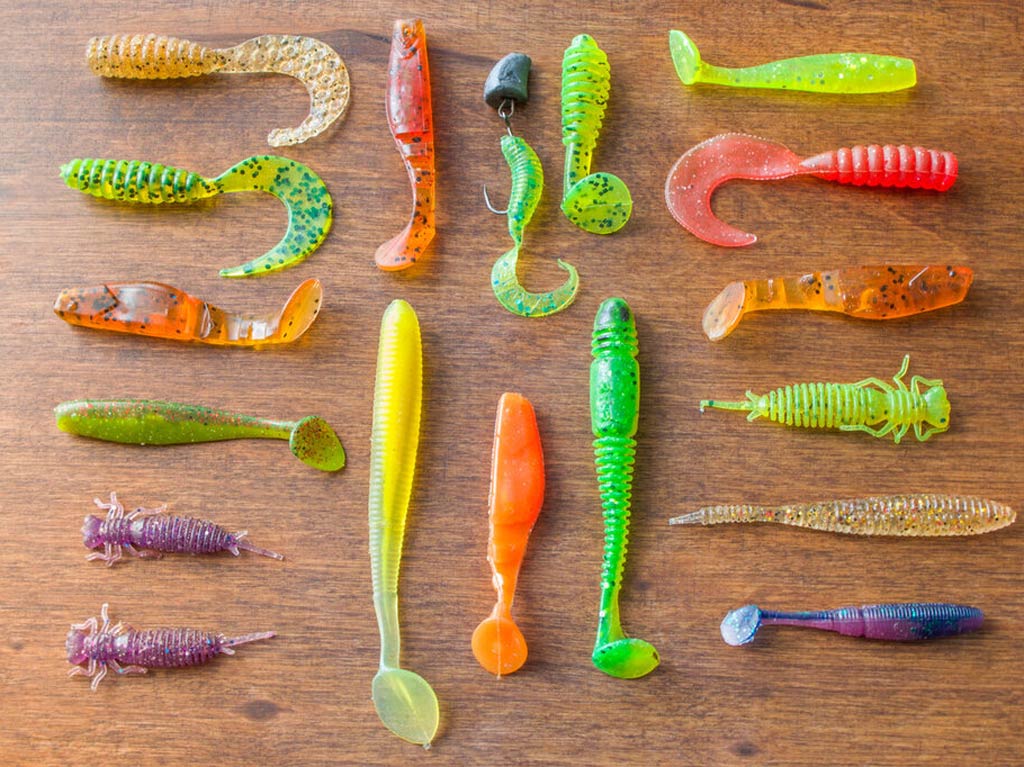Reading Time: 6 minutes
Across the United States, Bluegill fishing means laughter and smiles for tons of anglers of all ages. These tough little critters stand out thanks to their colorful appearance, abundant numbers, and easiness to find. A part of the Sunfish family, they’re a family-favorite fish, great for introducing the little ones to the sport of fishing.

Photo courtesy of Eric’s Elite Guide Service
But, if you’re new to Bluegill fishing, you’ll need some tips. In this guide to the best Bluegill bait, I’ll help you get your hands on plenty of these delicious creatures. Are you ready? Let’s dive in!
Bluegill Bait Basics
One thing you should know about Bluegill is that they’ll take various baits. Whether using live or artificial bait, you’re likely to entice them. And that means more opportunities to catch some.

You can target Bluegill pretty much any time of the year, but they’re most fired up during spring and summer. This is when their spawning season occurs, which means they’re more aggressive and have a big appetite. Search lakes, canals, rivers, and ponds, keeping an eye out for vegetation or structures they can hide in.
As you scan the water, you should be able to locate Bluegill swimming around in schools. With a light setup, be sure to use small hooks as these fish have small mouths. The same goes for the size of your bait. Once you find a school, plop your bait nearby and drift it close or drop it right in front of them. You’ll have a bite in no time!
With the right bait, you’ll be able to score on plenty of Bluegill – and hopefully some nice-sized ones too. Read on to find out the specifics…
Live Bait for Bluegill
Earthworms

I’ll start with one of the most classic fishing baits – earthworms. These little critters have been around forever and are notorious for being handpicked from the dirt by anglers. You can find them as deep as 6 feet in rich dirt but you don’t usually have to dig that far to find some.
The best way to use an earthworm as bait is to bundle it up as best as you can onto the hook. This prevents it from being pulled off easily. Keep in mind that you want your worm to appear lively, so try to leave the ends hanging a little to allow for movement.
Nightcrawlers
Similar to earthworms, nightcrawlers are another one of the best baits for Bluegill. The main things that set them apart include their larger size and segmented bodies. You’ve probably seen them in fishing or sporting stores before, as they’re commonly sold for bait.
As nightcrawlers are a little on the larger side, a lot of anglers prefer to cut them into pieces and use smaller sections. Let it sit, jerking your rod here and there, and the fresh scent will attract nearby Bluegill.
Snails
If you’re new to fishing you may not think of this next one as a common bait. But the chewy meat and scent of snails are great for attracting Bluegill. You’ll want to use smaller snails that can fit in their mouth.
To properly hook a snail, push your hook thoroughly through its head or foot. Let your bait sit at the bottom and wait for your targeted fish to approach.
Cricket

Bluegills love insects and enjoy the tasty crunch that crickets provide. You can purchase these baits at pet stores or you can try and catch some on your own in the grass.
The most common way to hook a cricket is to place the hook through its throat and pull it out the back end. If you want your cricket to be alive, carefully place your hook and avoid hitting its brain or heart.
Grasshoppers
Grasshoppers are another popular insect that anglers enjoy using as Bluegill bait. Yellow ones are extra attractive to hungry Bluegill. Simply head out to some fields or pastures with a net to locate some on your own.
The most important part of using grasshoppers as bait is ensuring they’re hooked well. If the hook isn’t set well, they can slip off. The best method is by hooking through the back of the neck or the leg. This won’t kill your bait and it will allow it to maneuver around – and entice nearby fish.
Crayfish

In the Southeast, tons of crayfish inhabit lakes, rivers, streams, and ponds. If you locate ones small enough to be used as Bluegill bait, the crunchy sensation will send them into a frenzy. Place the hook through the tail, let the bait freely roam, and there’s a good chance of getting the fish to bite.
Small Fish and Fish Eggs
Last on our list of options for live bait are smaller fish species and their eggs. While the fish species Bluegill eat are limited in number due to their smaller mouths, small fish like minnows can work as Bluegill bait. You can hook your minnow through its back towards the tail or through its lips.
As Bluegill like to eat fish eggs as well, you should try hunting for them near fish beds. It’s very likely that hungry Bluegill will be hanging around here in search of their next meal.
Artificial Bait for Bluegill
Bread

We’ll start this section as we did with live baits – with another old-school classic! Bread has always been an angling favorite because it’s not too costly, you get a large supply, and you probably even have it at home already! Get a small piece, ball it up if needed, and hook it well through the hook.
Spinners
Spinners are another popular option for artificial bait because they grab the attention of Bluegill. The quick trolling motion, flashy appearance, and noise all work together to put on a good show.
A few examples of popular spinner lures for Bluegill include the Rooster Tail, Panther Martin, Mepps Mino, Thunder Bug, and plenty more. Whichever style you choose, stick to smaller sizes like #1 or #2.
Jigheads and Soft Plastics

There are a variety of jigheads and soft plastics out there that will help make you successful when Bluegill fishing. These baits often mimic the prey of Bluegill. They usually have an attractive odor too.
1″ plastics and 1/16 oz jigheads are perfect for Bluegill. A common example of a good Bluegill rig includes a Berkley Gulp Waxies Micro Bait and a small Berkley jighead.
Jigs
If you’re looking for a bait that can be reused, a jig should be your go-to artificial. Just like jigheads, jigs also capture the attention of Bluegill. The jerking motion and bright colors catch their eye and entice them closer to bite.
Popular jigs for Bluegill consist of the Slap Daddy, #6 Little Rascal, and Neon Moon. When picking out your jigs, just be sure to keep them on the smaller side, such as 1/32 ounce.
It’s Time to Use Your Bluegill Bait!

Photo courtesy of Tactical Angling
That covers all the best bait for Bluegill. This is a species that provides the ultimate freshwater fishing experience, all the while bringing you and your loved ones closer, along with providing some tasty meat. Now that you know what bait to use, get out there and get yourself some Bluegill!
Are you a Bluegill aficionado? What bait do you like best? Any questions to ask? We’d love to hear from you in the comments below!
The post The Best Bluegill Bait: An Angler’s Guide for 2024 appeared first on FishingBooker Blog.
https://fishingbooker.com/blog/bluegill-bait/
 CampingSurvivalistHuntingFishingExploringHikingPrivacy PolicyTerms And Conditions
CampingSurvivalistHuntingFishingExploringHikingPrivacy PolicyTerms And Conditions
